Astrantia large: description, landing and care

Increasingly, landscape designers use perennial plantations in their projects. A large herbaceous plant was no exception. Perennial inflorescences resemble small stars, therefore it is also called a starlet. This lush plant is completely unpretentious in care, for which gardeners are very fond of. In the article, we will consider the features of Astrantia and the rules for caring for the plant.




Peculiarities
Astrantia large (Astrantia major) is a perennial herb belonging to the umbrella family. The natural habitat of growth is Europe, as well as some regions of the Transcaucasus, and another type of Astrantia grows there - the largest.
Zvezdovka is a rhizome plant. Its standard height is 70 centimeters. Stems are slightly branched, have a small amount of foliage. On average, the height of the shoot reaches from 15 centimeters to one meter. The shape of the leaves is finger-split. There are also representatives with palmate-lobed foliage. They are collected in root-type sockets. Starfish blooms from May to September. The inflorescences consist of many small flowers, painted in white or coral color. They are umbrella-shaped and resemble small stars. An additional decoration is the wrapper leaves, which have a rich green hue. The fruit of astrantia is the two-seed. In the process of growing a perennial, gardeners often see bees on their site, since the star is a honey plant.
The plant can be easily grown at home. The lush inflorescences of the starfish are suitable for cutting, as they do not fade for a long time. Florists in their work often use the plant to decorate dry bouquets.




Varieties
Astrantia large became widespread throughout Europe, as well as in Western Asia. The plant has been grown since the 16th century, for such a long period, breeders managed to bring out high-quality species and varieties of plants.
Consider the most common varieties of large astrania.
- "Moulin rouge". The inflorescences of the starlet are ruby colored, they are decorated with dark leaves of the wrapper. The plant is best grown in well-lit areas. In this case, the color of the inflorescences will be bright, and the flowers themselves will be large.

- Ruby Wedding. The plant stands out for its dark red inflorescences. The height of an adult perennial is 65 centimeters. Unlike the previous variety, this Astrantia needs a shaded place to grow, not far from tall trees.


- Claret. The inflorescences, like the wrappers, are colored dark red. The maximum plant height is 55 centimeters. Vigorous flowering occurs in July, and fruits appear in early October. Suitable for container cultivation, better planted in shaded areas.

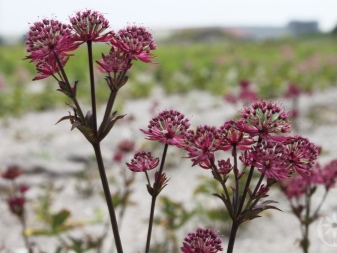
- "Diva". Burgundy inflorescences are noticeably darker than the wrappers. Plant height does not exceed 70 centimeters. Sunny and shaded areas are suitable for cultivation.

- "Venice". The highlight of the variety is its inflorescences. They are painted in a rich burgundy color. Perennial height is standard.


- "Lars". The flowers of the plant are bright pink. The maximum height is 70 centimeters.


- "Rosea". This large-flowered plant differs from the rest by the presence of specks on the leaves, bright inflorescences are painted pink. The star can reach a height of 60 centimeters.


- Alba. Sprawling bush with white inflorescences, which have a greenish tint. The height of such a perennial can vary from 30 to 60 centimeters.


- Ruby Cloud. Small inflorescences of the plant are white, they form a small bush. Usually, the height of an adult perennial is 55 centimeters.


- Roma. The large flowers of the ornamental plant are pink. The height can be 90 centimeters. Well cultivated both in the shade and in the sun.


- Buckland. The inflorescences of the plant are painted in a delicate pink color, the wrapper has a paler shade. Plant height is standard. Shaded and sunny areas are suitable for growing.

How to plant?
Before you start growing a starlet, it is recommended that you familiarize yourself in more detail with the features of planting a flower. A huge advantage of a decorative perennial is its simplicity. Almost any soil is suitable for the plant. Therefore, even a beginner in gardening can cope with planting and growing Astrantia.
First you need to choose a variety for planting and study its features. It is recommended to plant seedlings in open ground in May-June. Perennial can grow both in well-lit areas and in the shade. It all depends on the selected variety. Sun-loving plants, growing in a suitable area, have a healthy and beautiful appearance. Their inflorescences become large, and their color is saturated.
Due to the compactness of the rhizome, Astrantia does not need a deep fertile soil layer. The plant must be provided with a small growing area, which will be characterized by nutritious and loose soil.
It is not necessary to prepare the soil for planting in advance. Sandy soil is not suitable for the normal development of starfish. It is best to plant a herb in loamy or sandy loam soil.



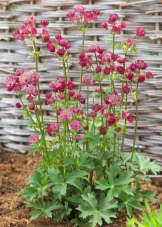
Astrantia is suitable for both group and solo boarding. Therefore, for the first method, a certain distance between plants was established when planting in open ground. The seedlings are placed in a planting hole and covered with earth to the root rosettes. Then the soil is compacted and moistened. Watering should be abundant.
Astrantia does not need insulation, as it perfectly tolerates low temperatures. However, in areas with a harsh climate for the winter, the plant is mulched with a thick layer of peat. The perennial grows very quickly, therefore, after a year of life, the formation of dense thickets is observed.

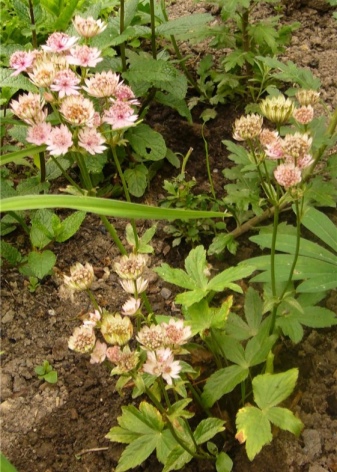
How to take care of it properly?
As mentioned earlier, large astrantia does not cause any difficulties at all in the growing process, as it takes root well on any soil, requiring minimal maintenance. This ornamental plant also tolerates dry summer days and low temperatures in winter.
Watering
Zvezdovka practically does not need watering, usually it is moistened by precipitation. During dry hot periods, the plant should be watered no more than once a week. No moisture is required in winter.
After watering, the soil around the plant is loosened and cleared of weeds. A similar procedure should also be performed after rain. To keep moisture in the soil longer, it is necessary to mulch the root zone. For this purpose, humus or peat is suitable.


Top dressing
The frequency of fertilization of the starfish depends on the fertility of the soil in which it is planted. The soil enriched with useful components requires feeding no more than once a season. Depleted soil needs additional feeding, which is carried out in the second half of the summer season.
A complex based on potassium and phosphorus can be used as fertilizer. In the spring, before the feeding process, the soil is watered abundantly.
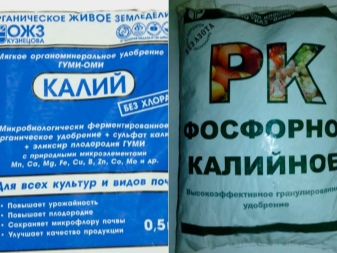

Diseases and pests
Zvezdovka has a high degree of endurance, it is very rarely overtaken by various diseases. To warn a plant against diseases, the main thing is to carefully monitor its development and appearance. Despite the fact that the plant is resistant to parasites, some pests can still attack it.
Naked slugs are considered the number one enemy of Astrantia. They can do great harm to the flower. When these pests appear, the leaves of the plant suffer - they eat them up. Astrantia's appearance deteriorates, while it loses its decorative properties. In this case, it is necessary to collect naked slugs from the surface of the perennial and destroy them.

To prevent the appearance of parasites, the plant is treated with special preparations. Usually the Thunder insecticide is used for this purpose.
Zvezdovka does not tolerate waterlogging of the soil, especially if the plant grows in heavy oxidized soil. This can lead to decay of the rhizome, which will subsequently lead to the death of the plant. To avoid this problem, you must follow the rules for watering, as well as loosen the soil around the flower.


Reproduction methods
Usually astrania bred vegetatively or propagated by seeds... The first method is suitable for those who want to get a plant that does not differ from the mother and has all varietal characteristics. The second method does not guarantee this.
Vegetative
This procedure is carried out in early spring or late autumn. It involves dividing the bush into several parts. Experts note that this improves the quality of the mother plant, it becomes more magnificent, and the color is more abundant. Delenki take root very quickly in the soil. To prevent the perennial from losing its decorative properties, it is recommended to transplant every 6 years. The plant can be propagated using root rosettes.
For breeding Astrantia, the method of dividing the rhizome is practiced. Small pieces are separated from it and planted in an enriched mixture.
This process takes place in early spring. With this method of cultivation, the plant will delight its owner with flowering only 2 years after planting.


Seeds
Sowing seeds is recommended in the fall. Thus, they lend themselves to natural stratification in winter. Ripe fruits are suitable for harvesting seeds. They are cut along with the shoots. In order for the fruits to fully ripen, they are placed in a dark place.
If you purchase planting material in a store, it is best to sow it in open ground in March. Unlike self-collected seeds, purchased seeds have a higher germination percentage. Seedlings are observed as early as 3 weeks after planting. It is necessary to thin them out regularly. The distance between seedlings should be 10 centimeters.
In the process of decorating a flower bed, it is worth considering the fact that the starlet is capable of self-seeding reproduction.
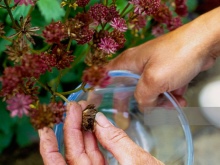
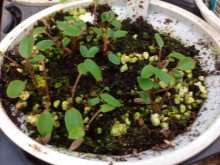

Use in landscape design
The flower is very popular among landscape designers. Professionals often use Astrantia in the design of garden and park areas.

Herbaceous perennial looks great in flower beds, in shaded areas. And also the flower is used to create borders.

Swimming pools and rock gardens are often decorated with such flowers. However, only undersized varieties of an ornamental plant are suitable for such a design.

An interesting solution for decorating a flower bed would be a mix of several varieties of astrantia. Thus, the flowers create the so-called zero-gravity effect. It is best to pick up perennials with different colors of inflorescences. Designers combine white, pink and burgundy flowers.

Zvezdovka is a very hardy plant. It tolerates both winter frosts and summer droughts. This is one of the many reasons the perennial has become so popular with landscape designers and gardeners. The plant can often be seen in group plantings.With its help, you can create a beautiful mixborder.


Astrantia goes well with many plants, such as lungwort and hosts. It will also look good with large roses and lilies. This concept of plant location will delight not only with an attractive appearance, but also with a pleasant aroma.

You can see the beauty of Astrantia in the next video.







































































































The comment was sent successfully.